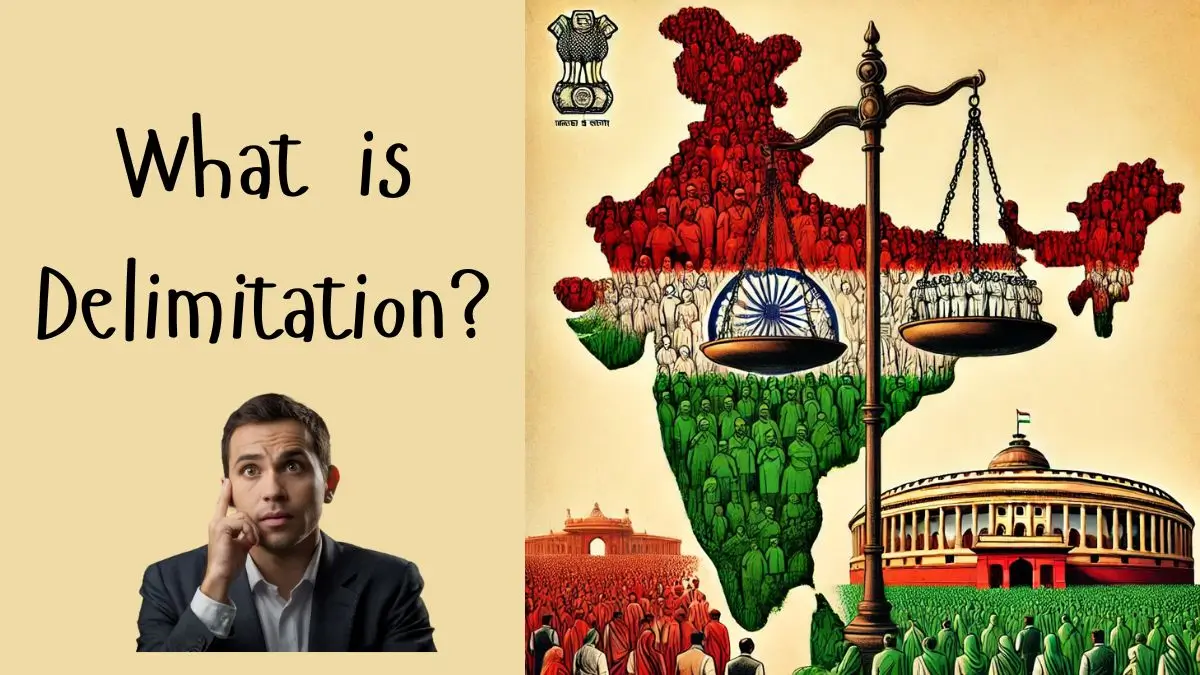Delimitation, the process of redrawing the boundaries of parliamentary and legislative assembly constituencies based on population changes, has become a contentious issue in India. The recent assurance by the Union Home Minister that southern states will not lose parliamentary constituencies has reignited concerns, particularly in states like Tamil Nadu. This article explores the constitutional provisions, historical context, and the reasons why southern states are apprehensive about the upcoming delimitation exercise.
Understanding Delimitation
Definition
- Delimitation involves redrawing the boundaries of parliamentary and assembly constituencies based on population changes.
- It ensures fair representation and upholds the democratic principle of “one citizen, one vote, one value.”
Objectives
- Maintain equal representation based on demographic shifts.
- Adjust the number of seats allocated to different states.
- Determine reservations for Scheduled Castes (SCs) and Scheduled Tribes (STs).
Constitutional Provisions on Delimitation
- Article 82: After each Census, Parliament enacts a Delimitation Act to redefine constituency boundaries.
- Article 170: The number of seats in state assemblies is adjusted according to the Delimitation Act after each Census.
Who Conducts Delimitation?
Delimitation Commission
- An independent body established by a Parliamentary Act.
- Its decisions cannot be challenged in court.
Composition
- Chairperson: A retired Supreme Court judge.
Members
- Chief Election Commissioner (CEC) or a commissioner appointed by the CEC.
- State Election Commissioners of respective states.
Role of Election Commission of India (ECI)
- Provides technical assistance.
- The Supreme Court (2024 ruling) stated that delimitation orders can be reviewed if they violate constitutional values.
History of Delimitation in India
Delimitation Exercises
- Conducted in 1952, 1962, 1972, and 2002 through the Delimitation Commission Acts.
42nd Amendment Act (1976)
- Froze the allocation of Lok Sabha seats and division of territorial constituencies based on the 1971 Census.
- This freeze was to protect states that successfully controlled population growth.
84th Amendment Act (2001)
- Allowed readjustment and rationalization of territorial constituencies based on the 1991 Census.
- Did not change the number of seats allotted to each state.
87th Amendment Act (2003)
- Changed the basis of delimitation from the 1991 Census to the 2001 Census.
- Did not alter the number of seats but ensured fairer representation based on more recent data.
Why Is Delimitation Being Revisited?
- The next delimitation exercise will likely be based on the 2021 Census (delayed due to COVID-19).
- Historically, delimitations in 1951, 1961, 1971, and 2002 followed population growth trends.
Potential Impact
- The number of Lok Sabha seats could increase from 543 to 753, based on a population ratio of 20 lakh people per constituency.
Why Are Southern States Worried?
Population Growth Disparity
- Northern states (UP, Bihar, Rajasthan, MP) have experienced higher population growth, potentially gaining more seats.
- Southern states (Tamil Nadu, Kerala, Karnataka, Andhra Pradesh, Telangana) and also western states have successfully implemented population control measures but may lose representation.
Governance vs. Representation
- Southern states argue that better governance and lower population growth should not result in reduced parliamentary representation.
- Fear that political influence will shift disproportionately towards the high-population states in the North.
What’s Next?
- Potential Increase in Total Lok Sabha Seats.
- Instead of reducing seats in any state, the total number of seats may increase to accommodate growing population disparities.
2026 Review
- The next delimitation can only happen after the first Census post-2026, likely in 2031.
Impact of Women’s Reservation Act
- The 33% reservation for women in Lok Sabha and state assemblies may also impact seat adjustments.
| Summary/Static | Details |
| Why in the news? | Delimitation Controversy: Let Understanding the Delimitation Dispute |
| What is Delimitation? | Process of redrawing parliamentary and assembly constituency boundaries based on population changes. |
| Purpose | Ensure fair representation, adjust seats, determine SC/ST reservations. |
| Key Constitutional Provisions | Article 82 (Parliament enacts Delimitation Act), Article 170 (State assembly seats adjusted after Census). |
| Who Conducts It? | Delimitation Commission (independent body), assisted by the Election Commission of India. |
| Historical Delimitation | Conducted in 1952, 1962, 1972, and 2002. |
| Key Amendments | – 42nd Amendment (1976) froze seat allocation based on 1971 Census. – 84th Amendment (2001) adjusted boundaries without changing seat numbers. – 87th Amendment (2003) used 2001 Census data for fairer representation. |
| Current Concerns | – Northern states may gain seats due to higher population growth. – Southern states may lose representation despite better governance. |
| Future Prospects | – Delimitation based on 2021 Census. – Lok Sabha seats may increase from 543 to 753. – Next review possible only after the 2031 Census. |



 Cabinet Nod to Atomic Energy Bill Unlock...
Cabinet Nod to Atomic Energy Bill Unlock...
 Insurance Amendment Bill 2025: Cabinet A...
Insurance Amendment Bill 2025: Cabinet A...
 Government to Rename MGNREGA, Hikes Job ...
Government to Rename MGNREGA, Hikes Job ...







